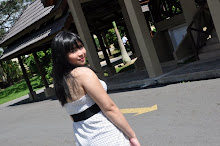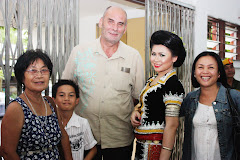The History of Mount Kinabalu Climbing
Today’s relatively comfortable two-day climb to the peak is a far cry from the travails of the early explorers. In 1851, Sir Hugh Low, then the Colonial Secretary for the British crown colony ofLabuan, credited as the first person to climb the mountain, took nine days to reach the summit plateau, traveling in a group of 42 people.
Sambatang Cave – the first camping site of Sir Hugh Low, the first person to climb Mt. Kinabalu which is through Kampung Kiau Taburi. The first lady to climb Mt. Kinabalu, Lilian Gibbs, was also through the same trail.
General Information About Kampung Kiau Taburi, Kota Belud
Kiau Taburi is a small kampong (village) at the foot of Mt. Kinabalu in the district of Kota Belud, Sabah,Malaysia. The natural beauty of the area which is still preserved with the scenic beauty of Mt.Kinabalu makes it a tourist attraction. Kiau Taburi is about 56km from the town of Kota Belud. At 900 metre above sea level, one can take the route toRanau and after passing through Pekan Nabalu, a signboard will show/direct the route to Kampung Kiau. Kampung Kiau encompass 3 other villages, i.e., Kampung Kiau Taburi, Kiau Nuluh and Kiau Bersatu.
The Origin of Kiau Taburi
One of the popular story of how the name of Kiau came to be is about a group of tobacco seller from the sarayo (an ethnic group in Sabah). Once upon a time, the entire state of Sabah and possibly the whole world, suffered a severe drought. It got worse as the day passes. Rivers big and small dried up. Everyone worked hard to search for water but failed. It happened that a group of tobacco sellers passed by the village. As they stopped to rest, one of the seller heard the sound of the “ kologiau “ bird several times. The group went off in search of the bird.
After a while, one of the seller came upon a “kologiau “ taking it’s bath at a water spring. The tobacco seller immediately drank the water. He then went off to tell the other members of his group. All of them drank from the spring. The finding of the water delighted the group as it was a very bad drought they were facing. They shouted “ Noiyau! (full, in the Dusun language), noiyahau, koiyau”, which meant full. They named the river “ Koiyau ”, which in Dusun meant “ fulfilling ” and after the “Kologiau ” which made the “ Kiau” sound and also for helping them find the water spring. The news about the spring spread throughout the villages. Possibly the villagers settled in Kiau because of the existence of the spring.
Taburi in Malay means trumpet/horn. In the days before the arrival of the British to Sabah (thenBorneo), the villages were at war with one another. The village of Kiau was also involved in the war. It was very fortunate that the villagers of Kiau were united and had strong and brave warriors and not easily attacked. Furthermore they lived in longhouses. When the warriors returned from war, they pass through Bukit Perhentian (Resting Hill), located near the Kiau Taburi monument, and blows the taburi (or horn) as a sign of victory to the villagers of Kampung Kiau.
As soon as they hear the sound of the taburi, the villagers will go out and welcome home their warriors…
The Dusuns who are Christians is one of the largest community staying at Kampung Kiau Taburi whilst the rest are Muslims from other races. The villagers still practice their traditional custom and language inherited from the ancestors in their daily life.
A majority of the villagers of Kampung Kiau Taburi are farmers. Although they have permanent jobs, the villagers continues to carry out farming activities, especially during the weekend. They do this to earn extra income for their families. For those who has no proper jobs, farming is their main source of income.
Ginger and vegetables are the main agricultural activity and also paddy.
Paddy planting is also carried out the traditional way to ensure the various types of paddy planted do not become extinct or disappear with time. The type of paddy planted are hill paddy. The types of paddy planted are Tombug, Sarayo, Tadong, Silou andRohuman which was also planted by their ancestors and has become a heritage. These types of paddy are suitable to be planted in hilly areas, although some has tried to plant on ordinary paddy fields. The farmers in Kampung Kiau Taburi plant their paddy in hilly areas as their village is located in such areas. They also plant organic vegetables which is of high quality. The vegetables will be sent to sellers in Pekan Nabalu or individual sellers will come to the village to buy the vegetables in bulk.
Pineapple planting is also a popular type of farming in Kampung Kiau Taburi and is still being carried out today. Almost all the villagers here owns and carries out pineapple planting. This can be seen as soon as one enter into kampong Kiau Taburi. Pineapple is planted by the roadside for the ease of the growers to bring out their produce.















